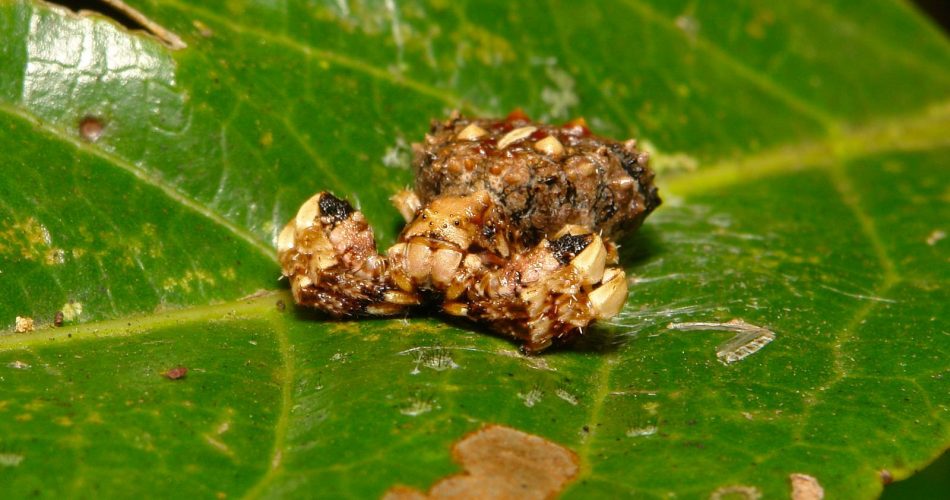Bird-dung crab spiders are camouflaged, looking like bird poop
We saw how poop can be used by some animals not only to feed themselves but also to defend themselves. This time, we’re going to see how poop can also become bait as well as a good camouflage to hide from enemies. That’s the case of some spiders named precisely bird dung crab spiders, or phrynarachne ceylonica.

They reside in Southeast Asia’s tropical rain forests, specifically in countries like China, Japan, Sri Lanka, and Taiwan. Their peculiarity is that they look like bird dung, as their name suggests. Their glossy patterning and unpleasant odor are part of their masquerade to trick predators that otherwise would try to eat these spiders, while birds tend to avoid them because normally they don’t ingest what they have previously digested or what looks like that.
“All spiders are predators, but they also have their own predators,” said Daiqin Li, a biologist at the National University of Singapore.
However, this camouflage also has another purpose: according to a study published last month in Current Zoology, the spider’s dung appearance attracts prey while warding off predators, what researchers call aggressive mimicry to actively attract their lunch.
Previous research hypothesized that the crab spiders’ masquerade could attract hapless insects. However, no one had experimental proof until now. Nonetheless, the idea made sense because, for many insect species, bird droppings are both appealing sources of nutrients and inviting homes for laying their eggs. Crab spiders are also sit-and-wait predators, preferring to attack unwitting prey that land on their leaves.
“They stay there for over 12 hours or more,” Dr. Li said. “Sometimes they just stay there for their whole life”.
To test this theory, the researchers first videotaped spiders in the wild sitting on leaves and compared the ensuing swarms of insects with those attracted by bird droppings of similar size, but Dr. Li noted that they had to make sure the droppings were “wet enough” because dry droppings did not attract many insects.
Spiders and bird droppings were visited by insects at considerably higher rates than the empty leaves. The spiders attracted insects, particularly flies, although the real poop attracted them more.
The researchers next used odorless watercolor paint to modify the spiders’ colors, which was readily washed off with drops of water after the researchers had finished the experiment, to see if the spiders’ distinctive color combination was important to tricking some insects. The result was that insects were less attracted to spiders painted all white or all black than unpainted spiders or spiders painted the same color as they originally were, implying that the deception relied heavily on the appearance of bird droppings.
The researchers also simulated what the insects would perceive in their visual systems and discovered that the unfortunate prey may be unable to distinguish between a hungry spider and actual bird droppings.
“Many people would not be able to even distinguish a spider from a bird dropping”, said Stano Pekar, a zoologist at Masaryk University in the Czech Republic who was not involved in the study and said its results were impressive. “I mean, they really have a very good masquerade”.

The results have raised new doubts about the evolution of the dung deception. Other crab spider species exhibit varied patterns and quantities of white and black on their bodies, which, according to Dr. Li, may impact how effective their disguise is for insects. The more “traditional” crab spider species are green and white, which allows them to blend in with foliage; they also don’t smell like bird droppings and attract fewer flies.

Several animals have evolved to disguise themselves as inedible or inanimate objects for predator protection, such as the early thorn moth larvae that resemble twigs and dead-leaf butterflies that resemble, well, dead leaves. Coloration tricks can serve numerous roles in the same species, but researchers rarely study this. Dr. Pekar believes that this could change.

“I think in the future”, he said, “we will see many more cases where both the coloration or the pattern will be both defensive and offensive”.
Source The New York Times
